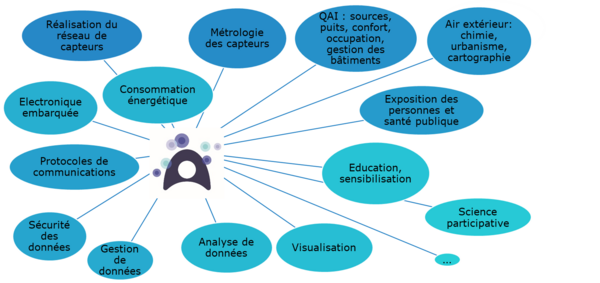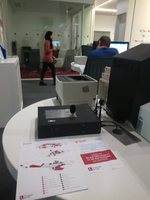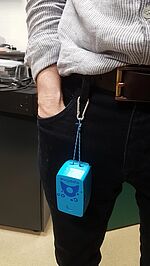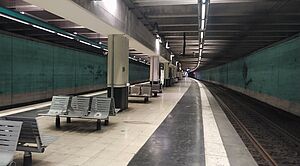Air Quality
The objectives of the Air Quality axis are to develop instruments for quantifying gaseous and particulate atmospheric pollutants, based on advanced spectroscopic techniques or miniature sensors, to study the description of various atmospheric compartments, in outdoor air or in confined environments, to identify the key processes involved in the formation, transformation and disappearance of pollutants, and to study the impacts of air pollution on health and the environment.
The development of multisensor systems is the subject of collaboration between several laboratories at the University of Lille, within the framework of the project APOLLINE – Air Pollution and Individual Exposure.

Portable particle sensors are being used as part of the PAMELA project (Particules Atmosphériques : Mesure de l'Exposition Individuelle à Lille et aux Alentours), funded by the I-SITE ULNE initiative of excellence. The objectives are to measure people's individual exposure to particles, throughout their day, in the various environments they frequent (home, workplace, other indoor locations, means of transport, outdoor air). Physical measurements are supplemented by information gathered through questionnaires and space-time-activity budgets. This enables us to:
- Know the characteristics of housing (typology, temperature, humidity, particulate pollution)
- Link indoor pollution levels to activities and buildings
- Draw up a dynamic map of outdoor particulate pollution on the MEL territory, on a fine spatio-temporal scale.
- Assess the determinants of particulate pollution linked to the environment (housing, MEL neighborhoods, means of transport, etc.) and to individual behavior (activities)
- Assess the relative importance of indoor and outdoor exposure
- Propose methodological and technical recommendations for future epidemiological studies.



Une étude spécifique est menée sur la qualité de l’air à l’intérieur des enceintes ferroviaires souterraines, en collaboration avec la SNCF. Par des mesures de concentrations de polluants sur les quais de gares en région parisienne, alimentant des modèles numériques, nous visons à déterminer la contribution des différentes sources de particules, qu’elles soient liées à l’usure du train (freinage, contact roue/rail, contact caténaire/pantographe), à l’usure de l’infrastructure (poussières de ballast, de tunnels, de revêtements), aux travaux de maintenance, aux apports d’air extérieur, ou aux usagers. Cette étude permettra de conseiller la SNCF sur la problématique fortement médiatisée de la pollution particulaire en environnements confinés, sur l’exposition des personnes, usagers et agents, et d’évaluer l’efficacité de systèmes de filtration pouvant être installés dans ces enceintes ferroviaires souterraines.
Contact : Benjamin Hanoune (benjamin.hanoune()univ-lille.fr)

